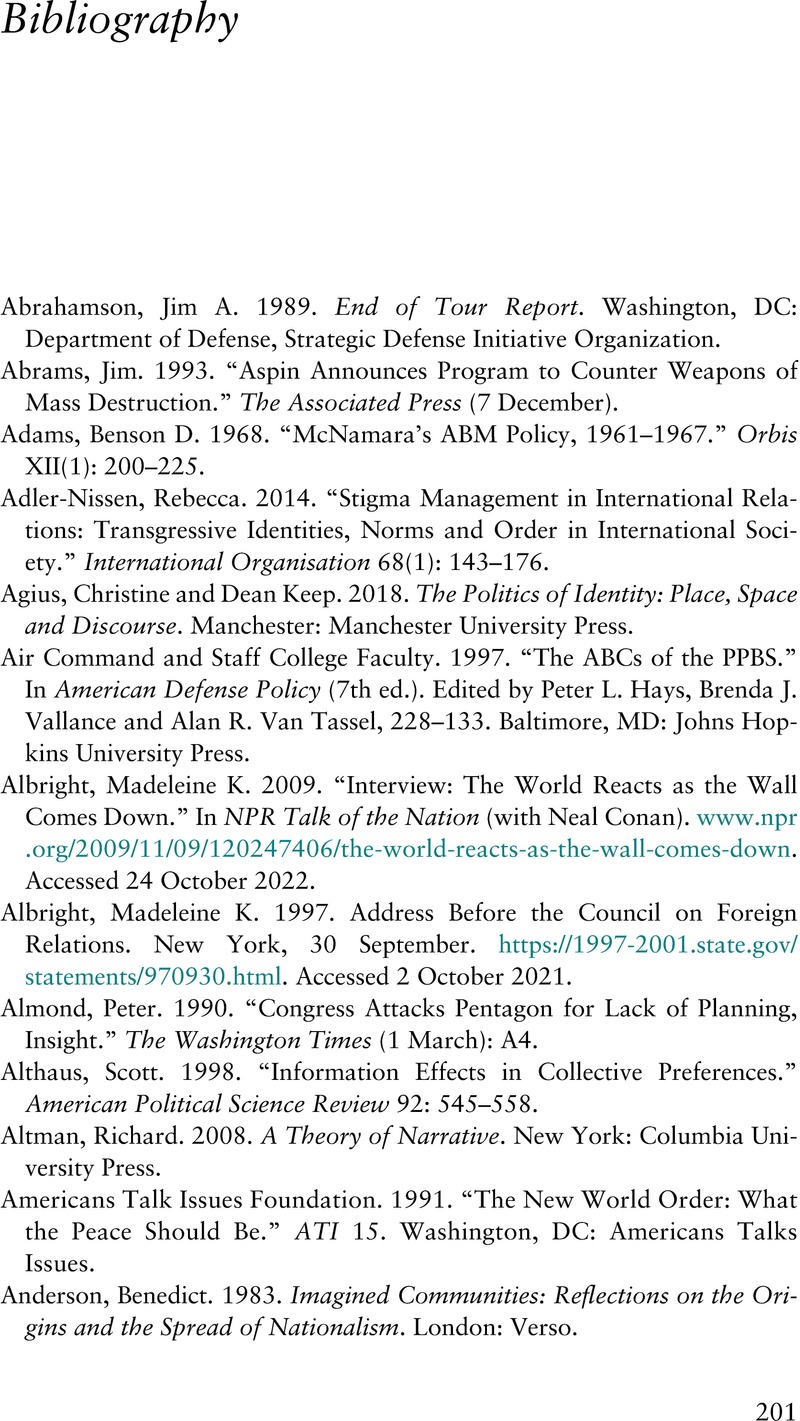Book contents
- The Uncertainty Doctrine
- The Uncertainty Doctrine
- Copyright page
- Dedication
- Contents
- Preface and Acknowledgments
- 1 The Fruits of Victory
- 2 Studying Narrative Politics in Motion
- 3 Irrational Enemies
- 4 Wars on Multiple Fronts
- 5 Shield of Invulnerability
- 6 The Future of the Uncertainty Doctrine
- Bibliography
- Index
- References
Bibliography
Published online by Cambridge University Press: 31 August 2023
- The Uncertainty Doctrine
- The Uncertainty Doctrine
- Copyright page
- Dedication
- Contents
- Preface and Acknowledgments
- 1 The Fruits of Victory
- 2 Studying Narrative Politics in Motion
- 3 Irrational Enemies
- 4 Wars on Multiple Fronts
- 5 Shield of Invulnerability
- 6 The Future of the Uncertainty Doctrine
- Bibliography
- Index
- References
Summary

- Type
- Chapter
- Information
- The Uncertainty DoctrineNarrative Politics and US Hard Power after the Cold War, pp. 201 - 242Publisher: Cambridge University PressPrint publication year: 2023

